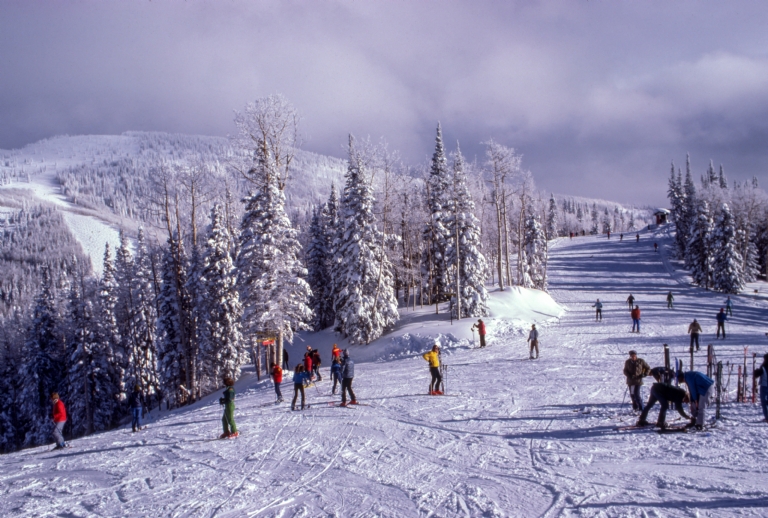Who invented skiing and where did skiing originate?
The ski predates the wheel according to BBC reports. Historian and writer Roland Huntford summarises in his book Two Planks and a Passion: A Dramatic History of Skiing that skiing was a form of survival for the Cro-Magnon men (pre-homo sapiens). Our ancestors would attach sticks to their feet to race down snowy mountain slopes away from predators. Evidence comes from elaborate cave drawings which depict men on skis during the last Ice Age several thousand years ago.
Although it is impossible to contribute a name to the first skier, we can determine the places where people first skied from the ancient artefacts found. One such example was found in Russia by archaeologist Grigoriy Burov in the 1960s. Burov unearthed fragments believed to be from skis made around 6000BC!
Representations of skiing have also been replicated in ancient paintings, the setting of which is believed to be ancient China. Experts believe skis were used here to safely cross the wetlands and marches when they had frozen over, allowing the men to hunt the reindeer and elk. A study of history shows that a form of skiing has been an essential practice for humankind living in colder countries.
Skiing fever spread across the world with Europeans trying their feet at adorning skis and heading to the snowy slopes. Scandinavia is regarded as the place where skiing evolved. The word ‘ski’ actually derives from the Norwegian word ‘skío’ which translates to a ‘split piece of wood’.
Early skiers would use one long pole or spear to help guide them through the snow, with the first depiction of a skier holding two ski poles from 1741. Skiing was primarily used for transport from its conception until the 18th century when skiing turned into a sport and beloved pastime.





